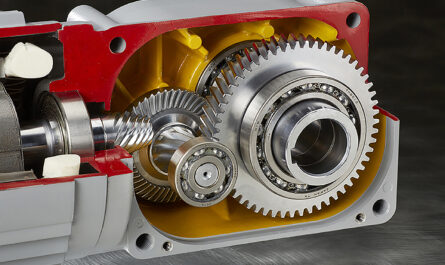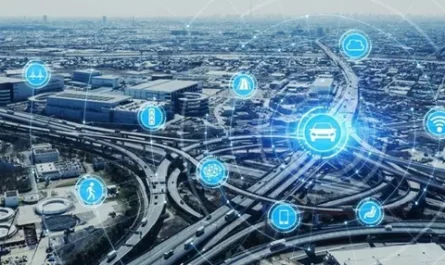Advent of Battery-Powered Rickshaws
E-rickshaws, or electric rickshaws, first began appearing on Indian streets in the early 2010s. These three-wheeled vehicles are battery-powered and provide a green, emission-free mode of transportation compared to traditional auto and cycle rickshaws. The batteries can be charged overnight using standard electric sockets at home or at public charging stations. This allows electric tuk-tuks drivers to operate during daytime hours without worrying about high fuel costs or dependence on diesel or petrol.
Some key advantages of electric tuk-tuks include very low running costs of around Rs. 5-10 per day compared to Rs. 150-250 for diesel E-Rickshaw Maintenance is also cheaper as electric tuk-tuks have fewer moving parts and do not require frequent oil changes. Being electric, they are nearly silent in operation which makes them suitable even for crowded cities. The maximum speed is around 25-30 kmph which is sufficient for short urban commutes.
Government Support Drives Mass Adoption
In the last decade, the central and state governments rolled out various incentives to promote electric tuk-tuks. Some states deemed them as a non-motorized vehicle so that they did not require a driver’s license, registration, or permit to operate. Financing options were made available through partnerships with banks and NBFCs. Subsidies were provided to manufacturers for locally producing electric tuk-tuks instead of importing from China. This helped bring down prices to around Rs. 80,000-1,50,000 making them attainable even for lower-income drivers.
Special charging stations were set up in many cities with low electricity rates for e-vehicles. Parking spaces were allotted for electric tuk-tuks near important transit points. Several cities granted electric tuk-tuks access to public bus lanes to improve commute times. These coordinated efforts helped address operational challenges and boosted the green mobility sector. As a result, electric tuk-tuks numbers have grown exponentially in the past 5 years with over 5 lakh plying on Indian roads today. Tier-2 and -3 cities are also witnessing rising uptake.
Empowering Entrepreneurs from Low-Income Groups
One of the biggest advantages of e-rickshaws has been providing sustainable self-employment opportunities. With minimal investment needed, many drivers are from economically weaker sections including migrants, unemployed youth and women. For them, it has become a viable small business venture compared to low-paying jobs.
Electric tuk-tuks drivers earn around Rs. 300-400 per day by ferrying passengers to local markets, stations and residential areas. Fleet owners rent out 2-3 vehicles in shifts allowing multiple drivers to earn. In dense localities, designated electric tuk-tuks stands have come up resembling mini transit hubs. This has led to upliftment of underprivileged groups and boosted intra-city transport in a green manner. Financiers point out that electric tuk-tuks loan repayment rates are over 95% due to the reliable income source.
Developments in Technology and Infrastructure
Over the years, electric tuk-tuks models have evolved significantly. Early lead-acid batteries with 50-80 km range are being replaced by lithium-ion variants providing 150-200 km on a single charge. New swappable battery systems allow drivers to easily exchange drained units for charged ones reducing downtime. Advanced CPUs manage battery efficiency based on driver behavior through telematics.
Custom-designed electric tuk-tuks factories equipped with automated assembly lines now mass-produce high-quality vehicles. Localized supply chains help reduce costs. Manufacturers offer mobile service vans and periodic health checks keeping fleets well-maintained. Charging infrastructure is also growing with fast charging stations that can replenish 80% power in an hour. Some operators have set up centralized depots where dozens of electric tuk-tuks can charge together overnight. Such evolutions are certain to boost the appeal of eco-friendly shared mobility further.
Future Outlook
Going forward, e-rickshaws are expected to become even more ubiquitous across India. More powerful drivetrains allowing higher payloads and speeds up to 40 kmph will expand their viable applications. Connected vehicle technologies integrating IoT and telematics will optimize operations through fleet management systems. Smart battery swapping using RFID cards can enable quick turnarounds.
To reduce dependence on lead-acid batteries, initiatives are underway to develop local manufacturing of advanced lithium-ion cells. This will significantly improve performance-to-cost ratio. Several state transport departments are launching large-scale adoption programs to electrify their para-transit fleets. With GST input tax credits now available, costs are likely to trend lower enhancing affordability. If pollution concerns accelerate the switch to EVs, the immense untapped potential of last-mile connectivity through electric tuk-tuks will surely be tapped. As they get designed for greater comfort, more women may also take up driving as micro-entrepreneurs. Overall, electric tuk-tuks seem positioned to revolutionize urban mobility – benefitting both the environment and low-income populations.
*Note:
1. Source: Coherent Market Insights, Public sources, Desk research
2. We have leveraged AI tools to mine information and compile it.



